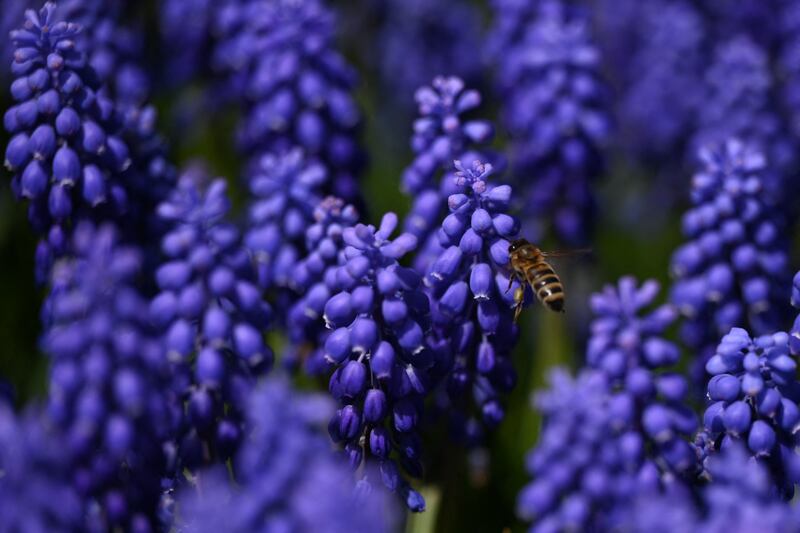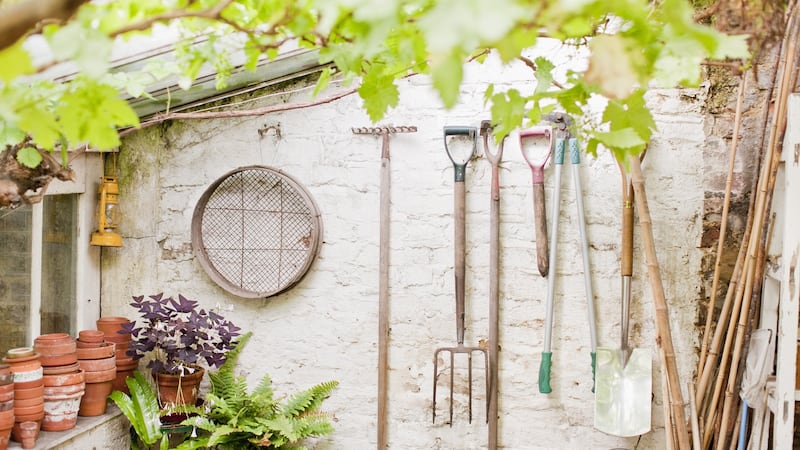As an experienced, professional gardener, you’re not supposed to make mistakes. But of course I still do.
All the horticultural booby traps, temptations and enticements that once snared me in their crosshairs as a rookie gardener, are the very same ones that can still catch me out to this day.
So, like most other gardeners, I still occasionally buy beautiful plants that I really have no room for, which then sit forlornly in their pots waiting to be given a permanent berth.
Or, I occasionally buy plants that I know in my heart of hearts need a different kind of soil, or a warmer, more sheltered garden than I can provide, condemning them to struggle. I’m also, despite knowing better, still guilty of occasionally planting things too closely together, or of wilfully choosing to ignore the fact that the rampant growth of one species might very quickly overcome another one less vigorous.
READ MORE
In the same way, I sometimes – oh the shame, the guilt – forget to water plants. Still absentmindedly lose plant labels. Still procrastinate. Still greedily buy too many autumn flowering bulbs and then put off planting them. Still never quite find the time to prick out those multiple pots of seedlings that I sowed in a burst of enthusiasm earlier in the year.
And even though I know I shouldn’t, I can still let sentimentality get in the way when it comes to getting rid of a plant that has outgrown its usefulness or that has gotten too big, or become diseased, or that for whatever reason doesn’t work within the larger scheme of things.
The muddy-fingered truth is that we are all, as that famous saying goes, only human, forever fallible, with our eyes on the stars but our feet in the clay. On the other hand, the wonderful thing about gardening is the opportunities it forever provides to put to rights so many of the mistakes we’ve made along the way.
Late autumn, as deciduous/herbaceous species slip into winter hibernation, and temperatures drop but rainfall increases, while the soil still retains something of summer’s warmth, is one of the very best times of the year to do this.
Given these kinds of conditions, many kinds of plants can be successfully lifted, divided and transplanted. It’s also a great time to plant both container-grown and bare-root specimens (tree, shrubs, roses, perennials, biennials, hardy annuals) and spring-flowering bulbs.

So, if you’ve been putting off dealing with a neglected, weed-infested mixed border, for example, then this is a great time to tackle it. The same goes for lifting and dividing overly-large clumps of perennials that have started to lose vigour or have outgrown their allotted space.
That pot-bound shrub you’ve been meaning to find a place for? The climbing plant that you bought on a whim, which has been silently beseeching you to give it its rightful spot against a sunny wall? The overgrown, dated flowerbed or tatty shrubbery you reluctantly inherited from previous owners, which you’d love to revamp? The wildlife-friendly hedge you’ve dreamed of? Now is the time to act.
But just not too hastily. Throw ourselves at these kinds of jobs without a little forward planning and we run the risk of making a bigger mess than the one we were hoping to tackle.
Instead, start by studying the space. If the plan is to renovate an existing bed, then make a rough inventory of the plants that you want to keep and of those you’d like to move, or to remove, or to give away.
Now objectively consider the remaining planting’s weak spots. Does it provide enough year-round evergreen structure? Enough seasonal interest? Does the colour scheme work, or does it need a ruthless edit to update and refresh it?

Are the sizes, growth habits and preferred growing conditions of the plants you’d like to use suitable for the space? Have you included sufficient repetition of key plants and colours to create a satisfying whole? Have you taken the type of soil, the aspect (shady, sunny) and any other prevailing growing conditions into account?
The same goes for any new areas of planting, with the added proviso that you take the time to prepare the ground very well and properly clear it of existing weeds.
Speaking of those growing conditions, does the soil need to be amended with well-rotted manure and/or horticultural grit before planting? Are you planning to spread a weed-suppressing organic mulch after planting? If so, then source these materials before you start the job in order to streamline the process. Recommended suppliers include all good Irish garden centres along with specialist suppliers such as mulch.ie ; envirogrind.ie; geeup.ie
These issues aside, gardening is inevitably a mucky business so be suitably prepared. If you’re planning on lifting and dividing lots of plants in a border, then get your hands on some very strong black plastic sheeting (similar to the kind used by builders) to spread on the ground and help protect hard surfaces such as paving or ornamental pebble.
Any clumps of perennials can be gently dug out with a garden spade and then placed on this until you’re ready to divide and/or replant them. The same goes for small shrubs and bulbs.
Any plants that you intend to give away can be placed in strong, shallow plastic crates (the kinds used by greengrocers) to make it easier to transport them. If you’re going to be working close to/around a lawn, then spread some planks of wood to spread the weight of your feet and prevent the grass becoming badly compacted and churned up by wheelbarrows. If the ground is very wet or waterlogged, then hold off until conditions improve.

Speaking of wheelbarrows, there’s nothing worse than discovering halfway through shifting a heavy load of manure or soil that yours has developed a puncture or a flat tyre. So oil and pump it before you start.
The same goes for essential gardening tools like spades, forks, shovels and hoes, whose wooden handles can become dry, brittle and prone to snapping if they’ve been sitting in a dark, garden shed for too long. Before you use them, brush them down and then use an old rag to rub linseed oil into the wood. All of this will help to make the job so much easier, a case – to paraphrase another famous old saying – of ‘the tools maketh the gardener’.
This week in the garden
Before herbaceous perennials die back down to ground level for the winter, it’s always a good idea to mark their position with a stick or a label, to avoid accidentally damaging them when you’re digging over flower beds or borders, planting spring-flowering bulbs or adding new plants.
It also serves to remind yourself to protect their emerging young shoots against slug and snail damage in spring. If you’re leaving dahlia tubers in the ground overwinter, then do the same with these half-hardy, tuberous perennials before giving them a protective mulch.
Continue to plant spring flowering bulbs including daffodils, tulips, muscari, alliums, nectaroscordum, fritillaria etc. Many garden centres and specialist suppliers are now offering these at a discounted rate to clear remaining stock.
While there are lots of great bargains to be had, it’s important to buy plump, healthy, good-quality bulbs as these will establish, grow and flower better. Shrivelled, dry-looking, discoloured bulbs with obvious blemishes should be avoided.
Dates for your diary
Friday November 4th to Sunday November 6th, Anamadu Fields, Kilnaggross, Co Leitrim ‘Establishing a Cut-Flower Business’, a three-day intensive course (€320) covering all aspects of establishing a cut-flower business with flower farmers Ciaran and Kealin Beattie of Leitrim Flowers, pre-booking essential, see leitrimflowers.ie
















